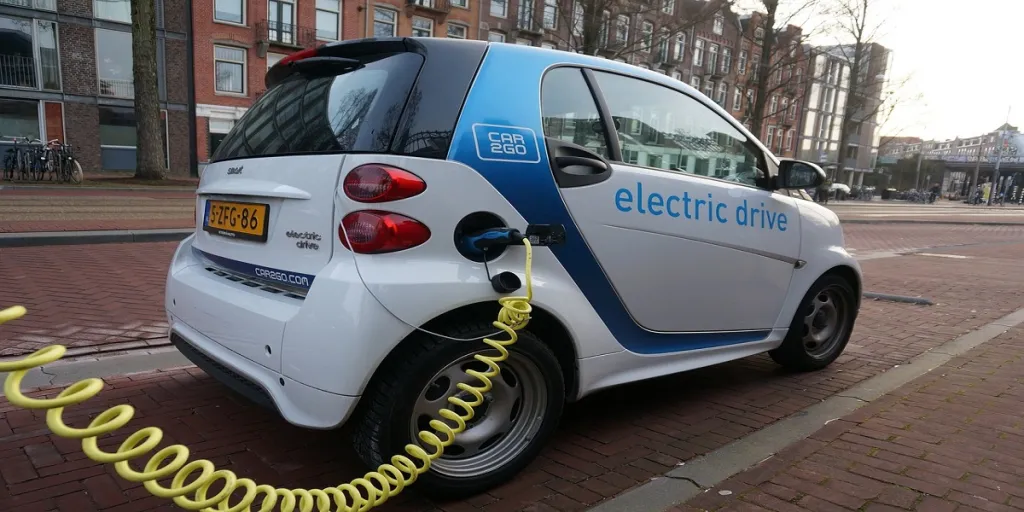Electric vehicles have taken over the automotive industry in recent years. Many car manufacturers are following the trend, which has no signs of slowing down anytime soon. What makes electric vehicles a better option is their ability to produce zero tailpipe emissions. A big challenge that comes with using electric vehicles is charging infrastructure. To increase the adoption of electric vehicles, there should be more charging outlets in different parts. Europe and North America are among the leading EV users, and it is believed that by 2025 these two regions will have about 7.9 million charging outlets.
This article will look at how EV charging works and the types of EV chargers available in the market. It will also discuss the demand, market share, size, and expected growth rate of electric vehicles globally in the coming five years.
Table of Contents
Prospects of electric vehicles
How electric charging works
Types of EV chargers
Conclusion
Prospects of electric vehicles
The electric vehicle market has expanded over recent years. This growth results from an increased number of electric vehicle manufacturing plants. Many governments have also put strict regulations and restrictions concerning vehicle emissions. This move by governments has greatly impacted the growth in demand for electric vehicles.
Facts & Factors reported that the global electric vehicle market size was USD 185 billion in 2021. The revenue is projected to hit USD 980 billion by 2028, registering a compound annual growth rate (CAGR) of 24.5%. This significant growth is expected to be driven by the increased awareness of the benefits of electric vehicle usage.
Geographically speaking, the Asia Pacific dominates the electric vehicle market. This is due to China being the world’s leading EV manufacturer and exporter of electric car components. In the forecast period, China will have roughly 57% of the market share. Interestingly, passenger cars generate the largest share of the revenue.
How electric charging works
Electric vehicle charging has been developed using different charging levels, plug types, and cable modes. Another distinct feature is the AC and DC kinds of charge. The power that is tapped from a grid, that is, a domestic socket, is the alternating current (AC). On the other hand, any energy stored in batteries is the direct current (DC). Whether a vehicle is charged by AC or DC, the vehicle battery ends up charged with DC.
AC, as a flow of charge, periodically alternates or changes direction. It can easily be generated from renewable power sources like hydropower engines or windmills. Most world’s electricity grids use AC as it can be efficiently transmitted over long distances. DC moves in a straight line and can be generated through solar panels. It can be used for energy storage and LED lighting. The energy stored in the batteries is usually converted from AC to DC.
The following are examples of EV charging locations:
– Charging stations at home
– Charging stations at work
– Public charging stations
– Gas stations with EV charging
– Electric car chargers at retail locations
Types of EV chargers
Electric vehicle charging can be categorized in various ways. Considering the charging levels, the higher the charging level, the higher the power output. Also, a newer vehicle charges faster than an older one. EV charging depends on the type of battery, the power output of the charging station, and the charging capacity of the vehicle.
Additionally, charging speeds vary due to some factors, which include:
– Charging output of the charging station
– Charging capacity of the vehicle
– Electric car battery
– State or amount of charge remaining
– DC charging curve
– Weather conditions
Level 1 charger
Level 1 charging involves plugging an electric vehicle into a socket that has a standard AC power plug. A standard power outlet can deliver a maximum of 2.3 kW. This makes Level 1 charging very slow. It gives an EV approx. 6 to 8 kilometers of range hourly.
Advantages
– Minimizes energy use as it transfers electricity at a slower rate
– It saves on installation costs as it requires no upgrades
Disadvantages
– It has a slow charging time
– Dangerous for car safety as there’s no communication between the power outlet and the vehicle
Level 2 charger
Level 2 charging is found on any standard AC charging station mounted on a pole, a wall, or standing on the ground. The charger delivers a power range of between 3.4 kW to 22 kW, which can supplement up to approx. 120 kilometers per hour. They are commonly found in public parking, residential areas, and business places.
Advantages
– It has a reduced charging time; thus, it is faster.
– It is compatible with more vehicles.
– Its charging time is more predictable.
– It maintains the battery life cycle.
Disadvantages
– It is expensive to purchase and install.
Level 3 charger
A level 3 charger is also called DC fast charger. It solely uses direct current to charge vehicle batteries as it bypasses the AC/DC onboard converter. Thus, this kind of electric charger delivers more power and is faster. This type of charger delivers a range of 15 kW to 350 kW, translating into up to 32 kilometers per minute. They are mostly located at fleet depots and gas stations.
Advantages
– It gives the fastest charging time as it is a DC.
Disadvantages
– It is the most expensive charging system.
– Battery life might deteriorate fast if it is the only power source.
– Homes and most properties cannot support the amount of power needed.
Conclusion
When buyers purchase electric vehicles, they should strive to find the right charging solutions. It would make no sense to own an environmentally friendly vehicle and fail to maneuver with it. In response, various brands offer electric cars that are compatible with the available charging methods. The various brands include; Tesla, Nissan, Volvo, Zoox, etc. To find reliable electric vehicles and spare parts, visit Alibaba.com.




